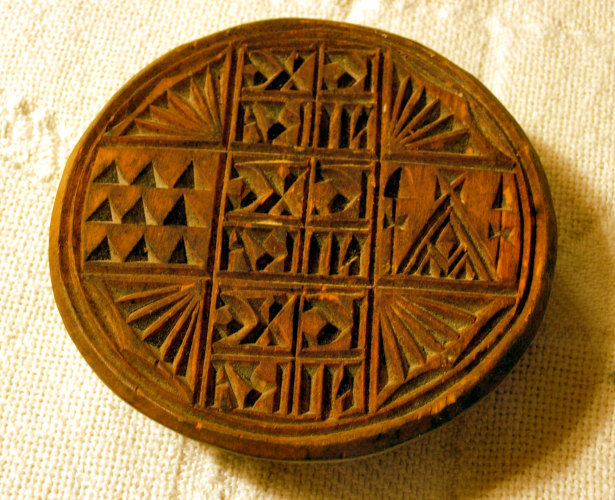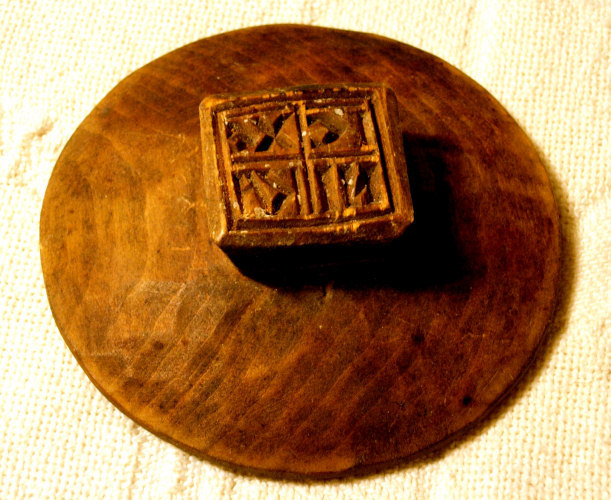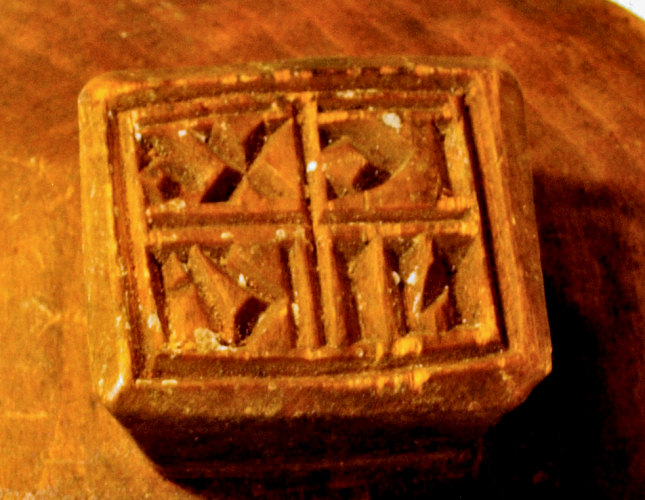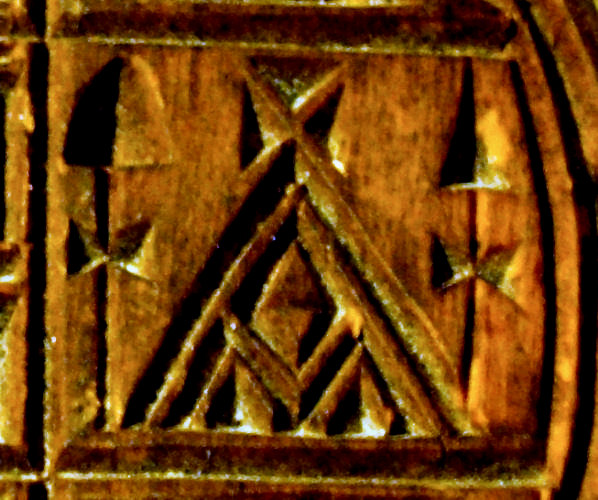


| This item is specifically used by members of the Orthodox Christian or Greek Catholic churches. It is a bread press used to press a design into dough ~ similar to how a butter press is used for imprinting a design on butter. A leavened bread, known as a prosphora when stamped with this press, was used in the Divine Liturgy (Eucharist). The dough, made from wheat flour, water and salt, is unique in that the ingredients are mixed together and then set aside for a week to evolve into a sourdough ball from which its own yeast can be derived. The sourdough ball is crumbled into a bowl of water, and in time it starts to bubble as the natural yeast brews. More flour is added, and the resulting dough is kneaded by hand until all the air is forced out. Two-thirds of the dough is formed into a large, round patty and the remaining one-third is formed into a smaller, round patty. The small patty is stacked on top of the large patty (their matching surfaces having been brushed with water so that they'd stick together), and then the press, which will have been dusted with a bit of flour, is positioned on top of the stack. The press would be pushed down into the dough, compressing the small patty almost completely into the large patty. The press, stuck in the dough, is left for three or four minutes, allowing it to be loosened and more easily extracted. The dough is then heated to complete the bread-making process. The design inscribed on the press exhibited here is the same as the design on all other prosphora presses. It includes a cross comprised of five squares. The central square is referred to as the Lamb. It is divided into four smaller squares which hold Greek letters IC XC NIKA, which translates as "Jesus Christ conquers." The squares above and below the central square, are copies of the central square. The square to the right of the central square contains nine triangle shapes in three rows of three, called the Nine Ranks. The square to the left of the central square, called the Panagia, is a representation of the Virgin Mary. The handle, on the backside of the press, is a copy of the central square, or Lamb. |



